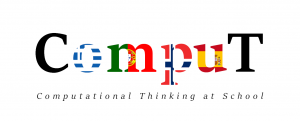Αρχική » Άρθρα με ετικέτα 'social impact of computation'
Αρχείο ετικέτας social impact of computation
Concepts and Practices of Computational Thinking by HELLO RUBY
Source HelloRuby
10 Reasons to Teach Coding – Sylvia Duckworth
Coding allows students to create content, not just consume it. Coding empowers students and give them tools to express themselves in really cool ways. Coding teaches storytelling with games and animations. Coding is a place for students to take risks and fail safely. Coding is inclusive and builds self-confidence Coding supports many principles of mathematics […]
Dimensions of Computational Thinking in COMPUT project
When we started working on the project Computational Thinking at School, our plan was to study the following dimensions of Computational Thinking creative problem solving algorithmic approach to problem-solving problem solution transfer logical reasoning abstraction generalization representation and organization of data systemic thinking evaluation social impact of computation While working on the dimensions, it proved […]
Computational skills for future jobs
How important are computational thinking skills for future jobs? Explore the presentation by Digital Technolgies Hub The presentation here code-posters




